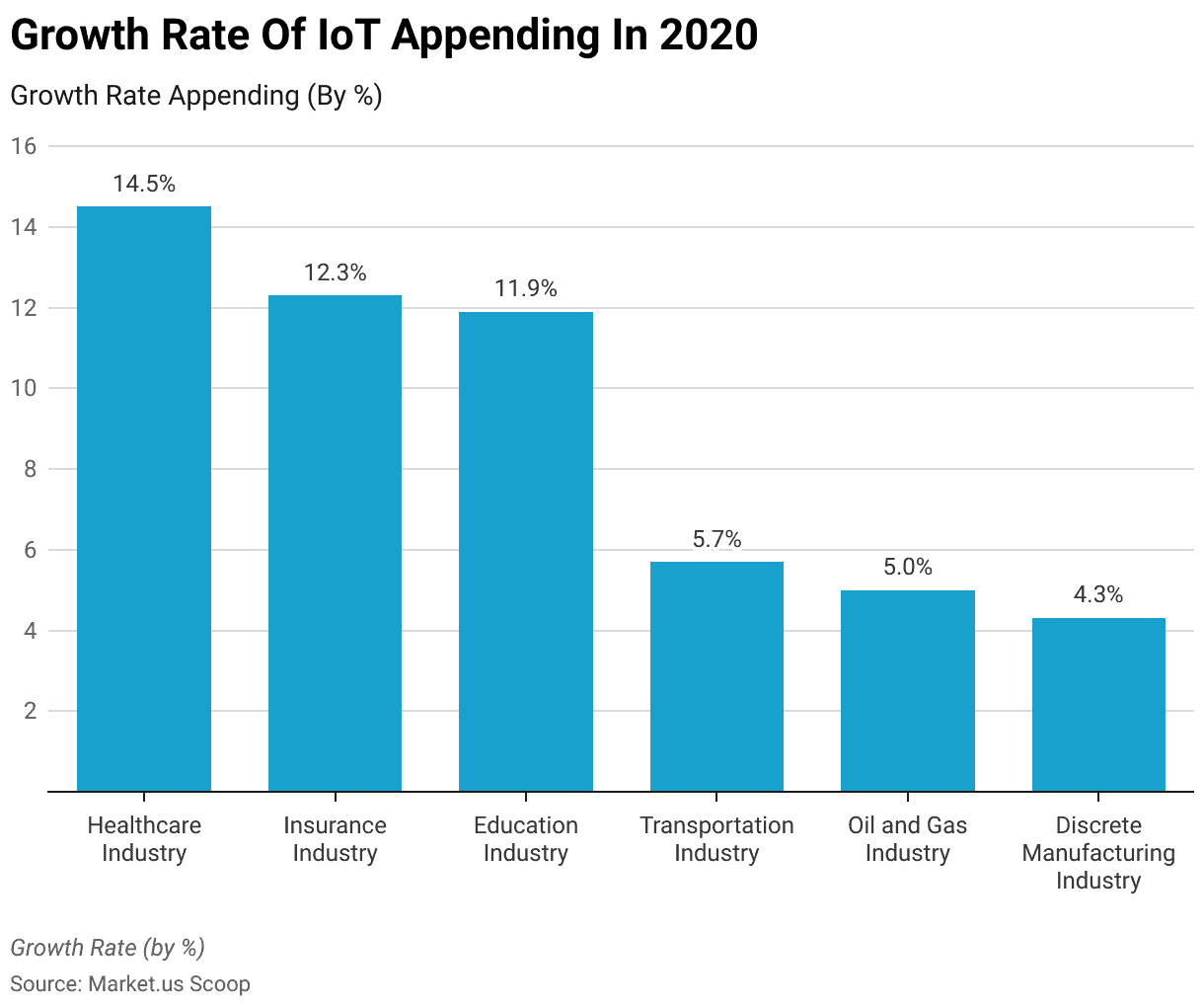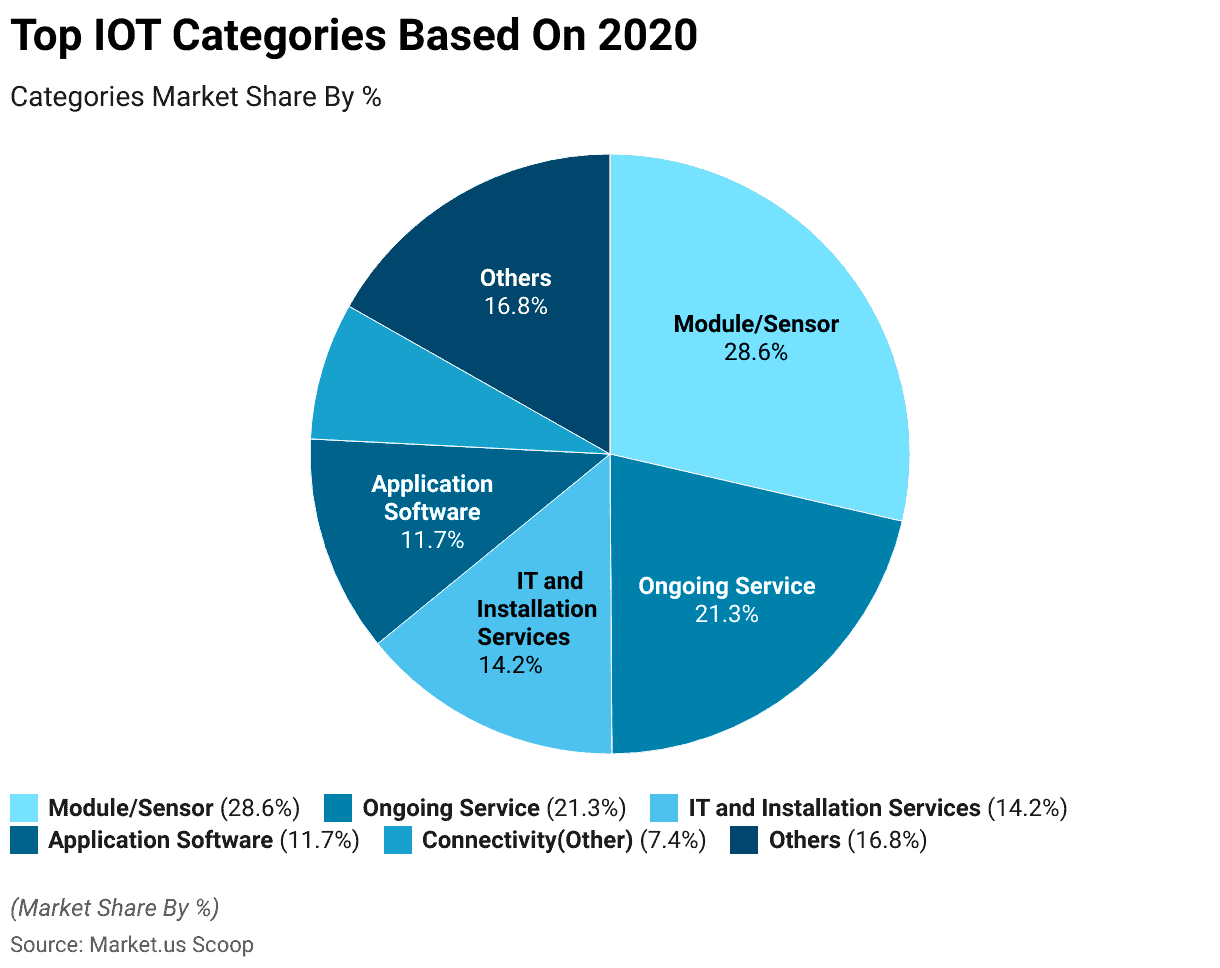Table of Contents
“According to Internet of Things (IoT) Market, There are well over 13 billion connected IoT devices market around the globe, it’s expected there will be 25.4 billion IoT devices by 2030 and there are more than 400 active IoT platforms in existence.”
Editor’s Choice
- There are more than 13 billion IoT devices in the world.
- It’s predicted that to have 25.4 billion IoT devices by 2030.
- IoT devices outperformed non-IoT devices by 2020.
- There are over 400 operational IoT platforms that are in operation.
- Video entertainment is the largest segment of spending in IoT.
- More than 10% of VC funding is related to IoT.
IoT Market Statistics
According to Internet of Things (IoT) Statistics, Numerous research organizations and research institutes have conducted extensive research to evaluate what is happening in the IoT market. The results differ however they all share one thing in common – the numbers are always awe-inspiring quantity. This set of IoT market data provides good information about how active the market is.
- $381 billion, the estimated worldwide IoT revenue adjusted to the impact of the spread of the pandemic.
- This is lower by 9% than the initial estimate prior to the outbreak of the epidemic.
- $906 billion, the estimated 2025 world IoT revenue adjusted to account for the consequences of the pandemic.
- $200 billion in approximately 2025 IoT global revenue will be destroyed due to the pandemic.
- While still lower than the initial figures, the figures of IDC are starkly different from those of GSMA Intelligence:
- $742 billion, the estimated global IoT revenue adjusted to account for the consequences of the cholera pandemic.
- This is 8.2% less than the 14.9% growth forecast IDC predicted in November of 2019.
- IDC anticipates that worldwide IoT spending to reach double-digit rates by 2021. The goal is to reach an annual compound increase (CAGR) in the range of 11.3% over the 2020-2024 timeframe.
- $166 billion is the estimated size of the global market for connected vehicles by 2025.
- $81.1 billion – expected worldwide revenues for connected-car services until 2030.
- 76.3 million units. total of connected car sales worldwide in 2020.
- $55 billion is the estimated worldwide market worth for the IoT fleet management market in 2026
- 20% to 20% IoT the fleet’s management CAGR between 2020 and 2026.
- $832 billion, the number of investments that companies made during the IoT market in 2020.
- $332.67 billion – the anticipated global value for the IoT Healthcare market by 2027.
- 13.2% – CAGR for the IoT Healthcare market from 2020 until 2027.
- $5.31 billion – that’s the IoT school market’s value for 2019.
- 74%, which is the estimated IoT education CAGR between 2020 and 2027.

IoT Adoption Statistics
Prospects look promising for this business venture, with the IoT software market expected to experience rapid expansion both short- and long-term, being integrated into nearly all forms of human technology. IoT is often utilized with tools for artificial intelligence available on the market, enabling researchers to gain more information from complex data through machine learning software as well as predictive analytics.
Therefore, it is vitally important to realize that IoT uses and adoption are increasing at an ever-faster rate, alongside AI use. Recently we have seen companies adopt IoT for various uses while meeting standards; naturally, this should also bring some degree of success – earning or saving money respectively – as this is how they operate:
- 65% cost savings (GSMA Intelligence 2020)
- 68% revenue generation (GSMA Intelligence, 2020)
- 53% regulatory compliance was noted in this research study
Beyond that Here’s a list that provides the details of the ways IoT devices will impact various industries.
- Over 60% of companies currently utilize IoT and just 9% have none.
- Of the 21.7 billion connected devices for 2020 11.7 billion (54%) are thought to be IoT connection devices.
- 30 billion is the estimated number of IoT device connections by 2025.
- The figure is the equivalent of 4 IoT gadgets per user, on average.
- $77.3 billion – world industrial IoT market size by 2020.
- $110.6 billion – the global industrial IoT market size in 2025.
- $124 billion was estimated as the global smart city initiative’s investment in 2020.
- $189.5 billion is estimated for the global smart city initiative’s investments in 2020.
- $43 billion – worldwide IoT transport and logistics investment by 2020.
- The number is 840 million. IoT devices by 2020 that utilize cell networks.
- 5.7 billion is the estimated amount of IoT devices that will be connected to cellular networks in 2026.
- $16.8 billion – the estimated market value in 2026 of IoT security services, which stems from the need for better protection devices connected to IoT.
- 24.4% – The Compound Annual Growth Rate (CAGR) of the smart apparel (IoT-connected) market between 2020 and 2027. The market will reach its peak in 2027. roughly $6.42 billion.
- $53.9 billion – that’s the global connected car market’s value by 2020.
- $166 billion is the estimated global market for connected cars by 2025.
- 28.6% – the market shares of sensors and modules, the top IoT technology category for 2020.
- 21.3% – 2020 market share of the ongoing IoT services.
- 14.2% – the market shares in 2020 of installed IT services and connected IT.
- 11.7% – market share for 2020 for IoT applications software.

Best Artificial Intelligence Software
- Cloud Machine Learning Engine is a highly effective cloud-based predictive analytics model software. It has features such as Cloud Datalab and Prediction Services to help you understand the meaning of the IoT data, and create predictive models. It also provides business insight.
- Azure Machine Learning Studio is the top machine learning platform that helps its users develop software for business intelligence, among other applications. It offers powerful web-based applications to test models, trained models APIs, projects, and other applications which are accessible via its simple drag-and-drop interface.
- Salesforce Einstein is a highly skilled AI platform that is devoted to the processing of sales data. The modules it offers can aid you in analyzing IoT data and applying the insights and models generated by the program to practical applications to increase your return on investment.
- IBM Watson is a popular AI platform used for exploration and research. It comes with features like the ability to recognize visuals, a translator for languages as well and a natural language classifier which is ideal for a wide range of IoT data-related applications.
- The Nvidia Deep Learning AI is another popular platform used for AI as well as IoT analysis of data. It is packed with powerful features, including inference generation and testing deep learning, deep learning training as well as AI exploratory tools. It makes the generation of insights from connected devices much easier for analysts.
IoT Benefits Statistics
The phone isn’t the only smart technology available today. There are smart homes smart cities, smart homes, automobiles that are smart, among more. IoT is such an important business because of the broad applications it can have.
The ease of use and the lives saved are only a few of the advantages. Therefore, the IoT market size is huge massive, vast, and constantly expanding. Here’s a collection of figures which highlight some of the advantages of this technology.
Take advantage of our unbeatable offer - buy now!

- 83% of companies who have implemented IoT technology have seen improvements in efficiency due to it.
- 49% is the age of decision-makers who see IoT as a major change for their businesses and industries.
- 39% – that’s the age of decision-makers who see IoT as a transformative force for their businesses and industries however, the technology isn’t there yet.
- 10% – that’s the age of decision-makers who believe IoT will help but will not completely transform their business or industry.
- 36% of businesses are looking at new business opportunities due to IoT initiatives. IoT initiatives.
- 40% of customers do not care about whether chatbots or real person is on the other end of the line, so long as they’re receiving the assistance they require.
- About 43% of businesses that implement IoT policies within their business have improved business agility through improving the manner in which operational processes are carried out.
- 35% – estimated savings through smart lighting systems that implement an adaptive behavior instead of a fixed predefined behavior.
- $37 million in savings annually in the City of Barcelona because of intelligent lighting. In addition, there are new jobs it provides.
- 80 percent of retailers will utilize IoT to personalize the shopping experience in 2021.
- 66% of cities in the US invest in smart cities IoT technology. It includes smart meters, traffic signaling systems as well as Wi-Fi kiosks.
- 50% – that’s the estimate for delay reduction due to the utilization in the use of IoT within the health sector.
- 57% – estimates of an increase in productivity of the workforce in the healthcare sector due to IoT.
- 57% – estimated cost savings by the healthcare industry via IoT.
- 36% – estimates of new business models developed in the health industry, brought about by IoT.
- 27% – increased collaboration between healthcare professionals as well as patients thanks to IoT.
- 10% growth in capacity for road traffic by using intelligent parking.
- 30% – reduction in the time spent waiting for passengers by using connected public transportation.
Estimates of IoT benefits to public safety and crime levels due to IoT-enabled processes like predictive policing, real-time crime mapping, and gunshot detection:
- 8%-10% reduction in incidents.
- Reduced emergency response times by 30-40%.
- Decrease in fatalities by 8-10%.
- Improvement of emergency service arrival time by 10-15%.
- 10% decrease in street crime with IoT street crime monitoring of public safety.
Utilizing a variety of technological solutions, intelligent cities can reduce pollution, decrease waste, and conserve as much as 80 liters of water for each person a day. (Visual Capitalist, 2020)
- 10% – reduction in emissions of gas because of IoT application.
- 20-30% reduction in water consumption due to the utilization of IoT.
- 10% to 20% reduction in waste that is not recycled as a result of IoT implementation.
- 3 to 15% – reduction in the adverse health effects caused by bad air quality.
- 30% reduction in street lighting expenses through smart lighting.
- 20% – reduction in the cost of waste collection with intelligent waste management systems.
Discuss your needs with our analyst
Please share your requirements with more details so our analyst can check if they can solve your problem(s)



